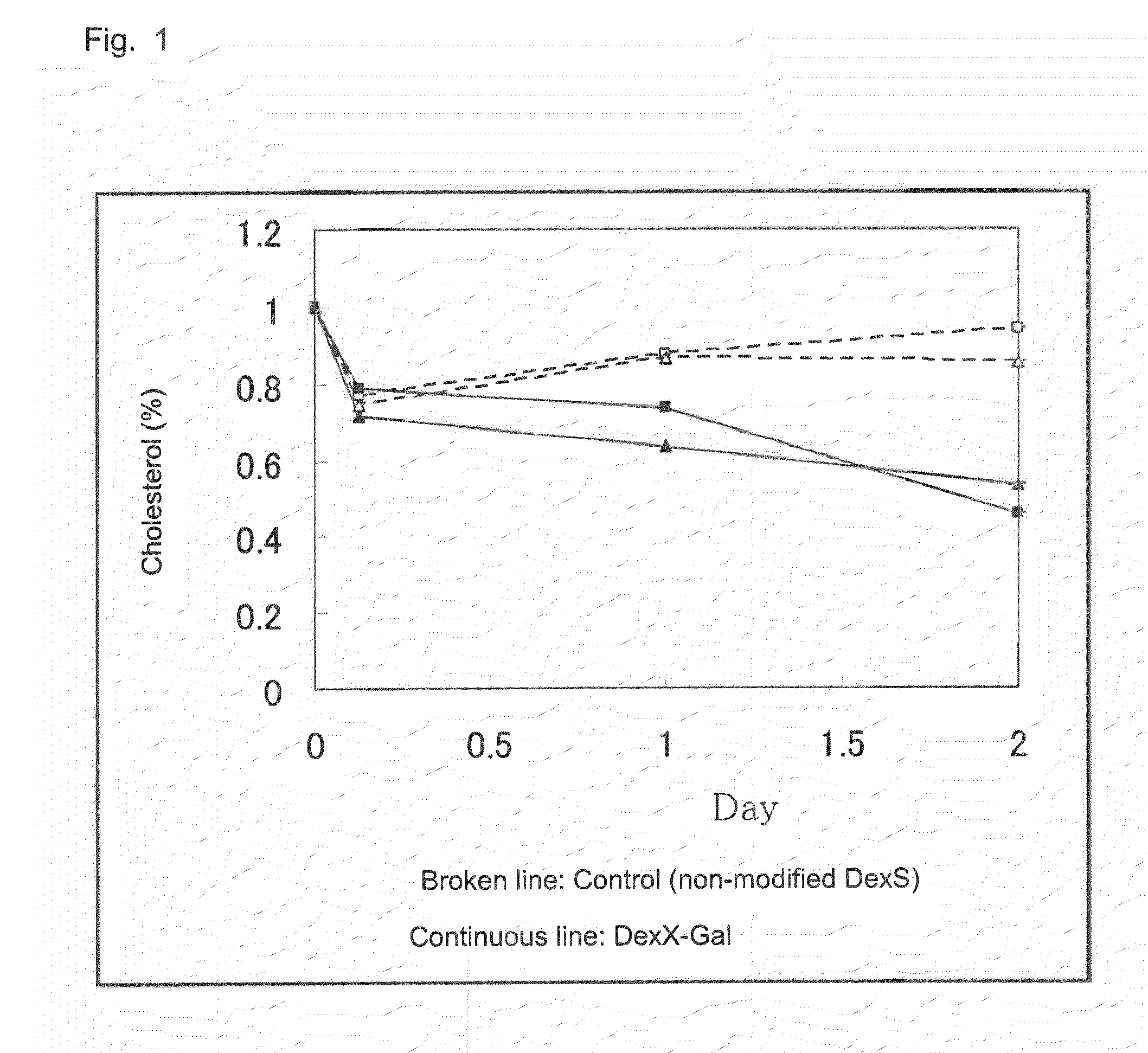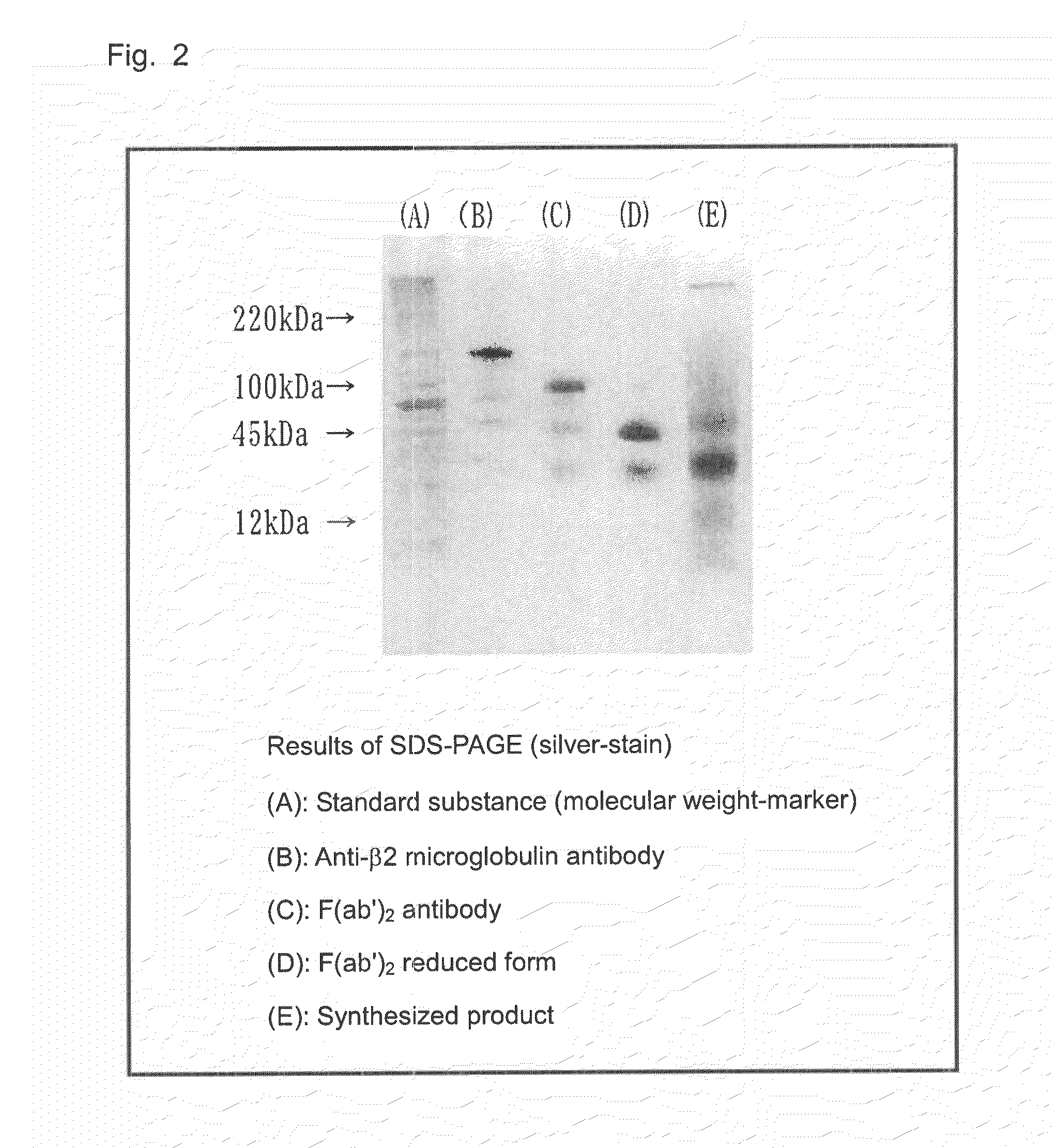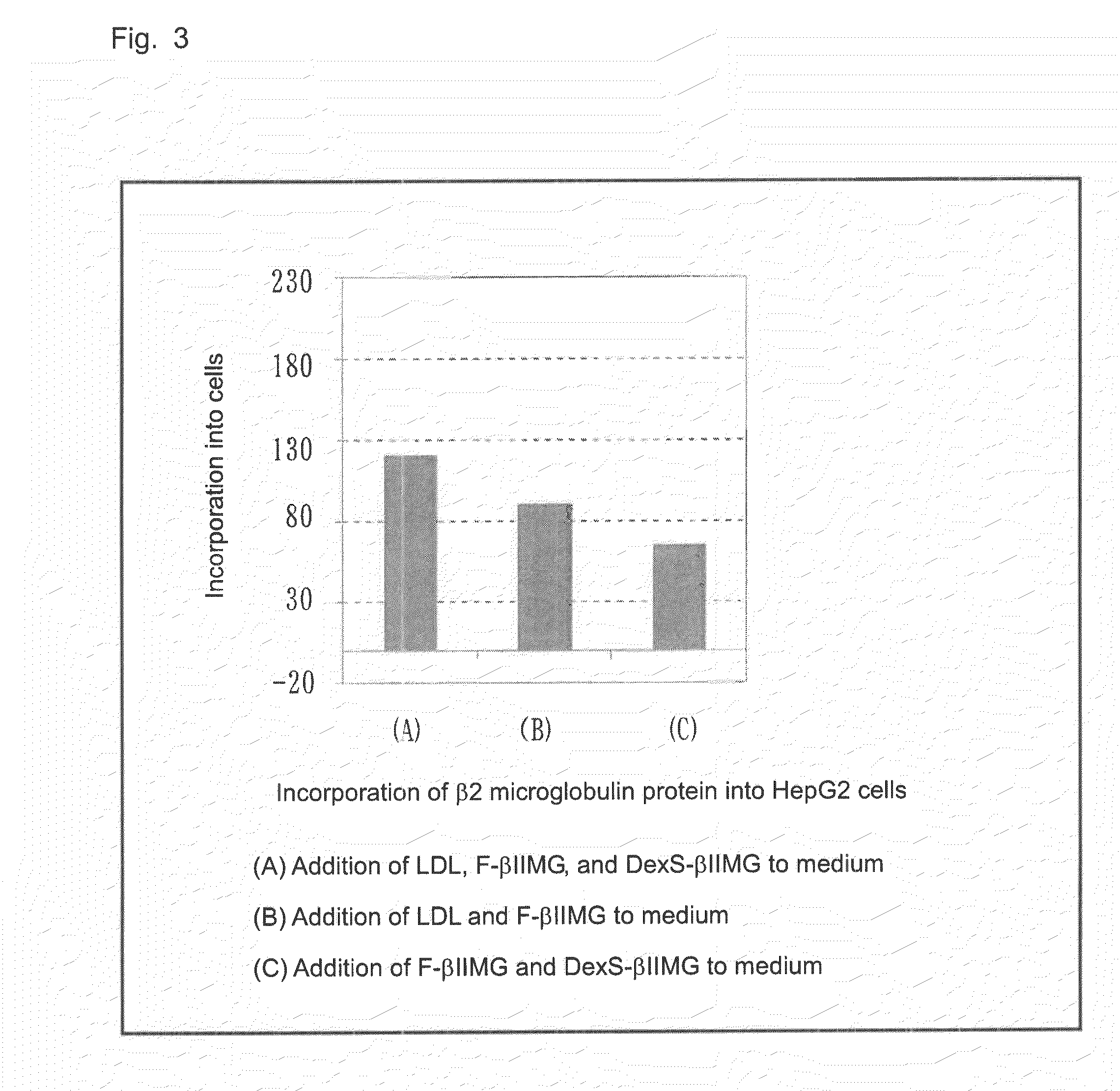Drug for suppressing pathogen occurring in vivo
- Summary
- Abstract
- Description
- Claims
- Application Information
AI Technical Summary
Benefits of technology
Problems solved by technology
Method used
Image
Examples
example 1
Synthesis of Dextran Sulfate-Galactose Complex
[0081]To formamide (25 mL) serving as a solvent, soluble dextran sulfate having a molecular weight of 36,000 to 50,000 (125 mg, 2.5 to 3.4 mmol), 1,6-hexamethylenediamine (67.4 mg, 581 μmol) serving as a linker molecule, and 1,1′-carbonyldiimidazole (78 mg, 484 μmol) serving as an activating agent were added. The mixture was allowed to react at 37° C. for 19 hours to thereby incorporate 1,6-hexamethylenediamine (linker) to side-chain hydroxyl groups of dextran sulfate.
[0082]Subsequently, D-(+)-galactose (34.7 mg, 193 mmol) was added to formamide (10 mL), and 1,1′-carbonyldiimidazole (37.5 mg, 232 mmol) serving as an activating agent was further added thereto. The mixture was allowed to react at 37° C. for 2 hours. Thereafter, hexamethylenediamine-incorporated dextran sulfate (56 mg, 1.1 to 1.5 μmol) was added to the reaction, and the resultant mixture was allowed to react at 37° C. for 21 hours. Through routine purification and separatio...
example 2
Blood LDL-Lowering Action
[0084]Toxicity and efficacy of the drug produced in Example 1 were investigated. To LDL-receptor•apoE double knocked-out mice (n=2), 2 g / L dextran sulfate-galactose solution (0.1 mL) and 2 g / L dextran sulfate solution (control) (0.1 mL) were administered once through the carotid artery. The blood cholesterol level was monitored through the cholesterol oxidase DAOS method. FIG. 1 shows the results.
[0085]As is clear from FIG. 1, only in the dextran sulfate-galactose modified form administration group, more effective lowering of blood cholesterol level was observed for two days, as compared with the control (non-modified dextran sulfate administration group).
example 3
Synthesis of Dextran Sulfate-β2 Microglobulin Antibody
[0086]Pepsin-immobilized resin was washed with 20 mM acetate buffer (pH: 4.5), and the washed resin was suspended in acetate buffer (pH: 4.5) (1 mL). β2 microglobulin antibody (50 μg) was added to the suspension and incubated at 37° C. for 24 hours. After incubation, the incubate was centrifuged at 15,000 rpm for three minutes. A portion (1 mL) of the supernatant was recovered and neutralized with 100 mM Tris-HCl buffer (pH: 8.0) (30 μL). The resultant liquid was purified through a protein A-immobilized column to remove unreacted products, whereby an F(ab′)2 antibody was isolated. Subsequently, 2-mercaptoethylamine (12 mg) was added to the thus-produced F(ab′)2 antibody (190 μg), followed by diluting with PBS to the volume of 1 mL. The antibody was incubated at 37° C. for two hours, and the incubate was purified through Sephadex G-25 column. The purified product was concentrated by means of an ultrafiltration membrane (3 kDa cut)...
PUM
| Property | Measurement | Unit |
|---|---|---|
| Level | aaaaa | aaaaa |
Abstract
Description
Claims
Application Information
 Login to View More
Login to View More - R&D
- Intellectual Property
- Life Sciences
- Materials
- Tech Scout
- Unparalleled Data Quality
- Higher Quality Content
- 60% Fewer Hallucinations
Browse by: Latest US Patents, China's latest patents, Technical Efficacy Thesaurus, Application Domain, Technology Topic, Popular Technical Reports.
© 2025 PatSnap. All rights reserved.Legal|Privacy policy|Modern Slavery Act Transparency Statement|Sitemap|About US| Contact US: help@patsnap.com



